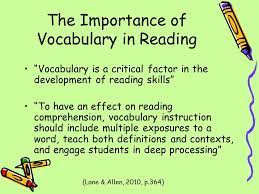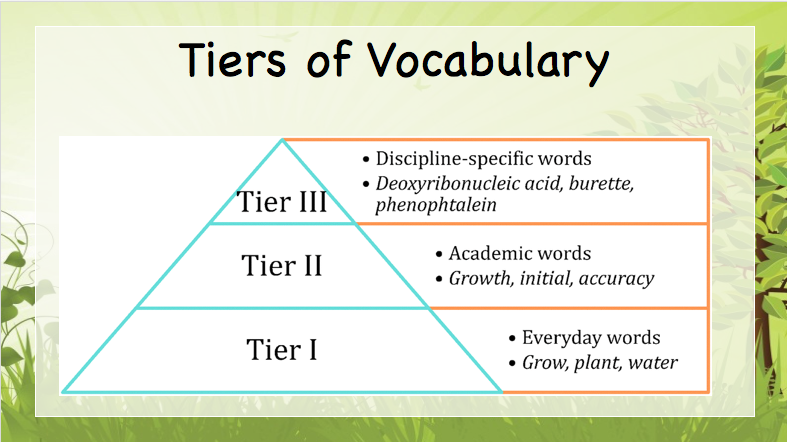Vocabulary is something we continue to learn and develop throughout our entire lives – an unconstrained skill. While some vocabulary is acquired implicitly through everyday interactions, it’s important to teach more complex and technical vocabulary explicitly. We can’t rely on fate, osmosis and exposure for students to learn the 50,000+ words they need to thrive in school and beyond.
Further, vocabulary is becoming more important in a world of digital dependency. Autocorrect may have a chance of picking up incorrect spelling, but it can’t be relied on to help you choose the word with the right meaning.
Teaching vocabulary is about context and repetition– what they need to know about the words they’re using, and using them multiple times.
Vocabulary development
Vocabulary development is a process by which people acquire words. Babbling shifts towards meaningful speech as infants grow and produce their first words around the age of one year. In early word learning, infants build their vocabulary slowly.

How is vocabulary development taught?
You can pre-teach vocabulary by using English as a second language (ESL) methods such as: Role playing or pantomiming. Using gestures. … Using the Spanish equivalent and then asking students to say the word in English.
“Vocabulary size is a convenient proxy for a whole range of educational attainments and abilities – not just skill in reading, writing, listening, and speaking, but also general knowledge of science, history, and the arts.”
A wealth of words, by E. D. Hirsch Jr
